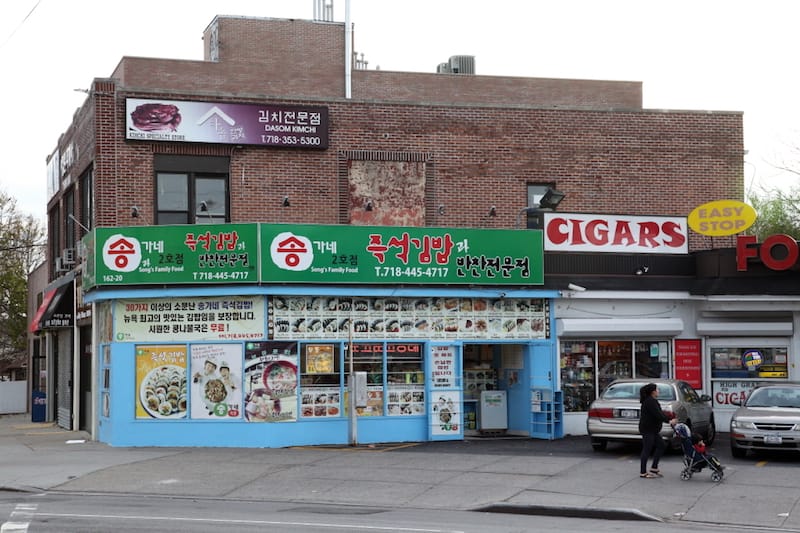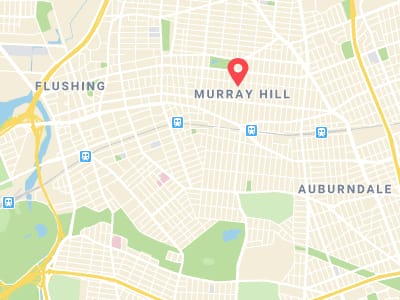As the calendar year turns over, we’ve grown accustomed to the barrage of lists telling us where to travel during the next 12 months. Oftentimes these places are a country or even a whole region – you could spend an entire year exploring just one of the locations listed and still barely make a dent.
We like to travel on a smaller scale. Forget countries and cities, for us the neighborhood is the ideal unit of exploration. Celebrating neighborhood life and businesses is, of course, essential to what we do as Culinary Backstreets. Since our founding in 2012, we’ve been dedicated to publishing the stories of unsung local culinary heroes and visiting them on our food walks, particularly in neighborhoods that are off the beaten path.
Last January, we declared 2018 as “The Year of the Neighborhood,” and what a fruitful year it was. We had our fair share of fresh experiences and were also able to contribute to the economies of neighborhoods otherwise neglected by the tourism industry. Tourism is an important economic force in many cities, as it should be, but if it is not dispersed responsibly, it can devastate the urban ecosystem, one that’s based on the sound health of all of a city’s neighborhoods.
With that in mind, we are happy to again focus on neighborhoods off the main tourist trail in 2019, as well as the people and places that keep them going. Below is a compilation of the less-visited areas that our correspondents are planning to explore this year:

Queens: Murray Hill
 Ask New Yorkers for directions to Murray Hill, and most will point you toward the tony East Side of Manhattan. It’s there that Robert Murray, scion of a prominent family of Quaker merchants, built his home in the 1760s. But the family also owned a nursery of more than 100 acres, filled with trees and other plants imported from around the world, in what was then the Town of Flushing. In the late 1800s, when the nursery gave way to residential development, a second neighborhood was named for the Murray family.
Ask New Yorkers for directions to Murray Hill, and most will point you toward the tony East Side of Manhattan. It’s there that Robert Murray, scion of a prominent family of Quaker merchants, built his home in the 1760s. But the family also owned a nursery of more than 100 acres, filled with trees and other plants imported from around the world, in what was then the Town of Flushing. In the late 1800s, when the nursery gave way to residential development, a second neighborhood was named for the Murray family.
This newer Murray Hill is much less well known. The 7 train that carries hungry travelers from Midtown Manhattan and along Roosevelt Ave., in Queens, terminates in the heart of Flushing’s Chinatown. To venture beyond, and eastward into Murray Hill, requires a bus transfer, a ride on the commuter rail, or perhaps a vigorous walk, which does build the appetite for our destination: Koreatown.
To be sure, not far from the original Murray Hill, Manhattan has its own Koreatown, too; it has the feel of a business district with after-work drinking hours. By contrast, its namesake in Queens is truly a neighborhood, reflecting the growth, in recent decades, of a Korean-American community that has largely supplanted older populations with Irish or Italian heritage. Many of the shops along Northern Boulevard, Murray Hill’s major thoroughfare, display the distinctive Hangul characters; a train station is decorated with a mosaic of traditional pottery remnants imported from the home country; appliance stores carry kimchi refrigerators.
Where the locals gather to eat, the ambiance is generally homey and unhurried. This seems especially true at restaurants and smaller shops that have a narrow focus, and where customers seek out favorite, comforting dishes. (We might know better if only we spoke Korean.) The focus might be on soup with hand-torn noodles, as at Arirang; or on warming bowls of porridge, at Bonjuk; or on steamed black goat, at Bangane; or on massive steamed buns overstuffed with pork and kimchi, at Northern Wangmandoo Dumpling. During the winter, one restaurant, Parksanbal Babs, serves a single dish, a bubbling hot beef-bone soup with all the fixings. (In summer, we understand, there’s a cold-noodle option, too.)
Even the BBQ restaurants – there must be dozens – can be singleminded. Although most if not all serve beef, some proclaim a house specialty with the glow of a neon pig or duck. Another, the soon-to-open Gopchang Story BBQ, is known for expertise with grilled intestines, which it proclaims are a time-honored, alcohol-absorbing companion to soju. We have little experience with that Korean distilled beverage; perhaps it’s time to find out if we have the belly for it. – Dave Cook
Click here to read the full neighborhood guide.
Published on January 14, 2019
Related stories
January 14, 2019
Barcelona | By Culinary Backstreets
BarcelonaAs the calendar year turns over, we’ve grown accustomed to the barrage of lists telling us where to travel during the next 12 months. Oftentimes these places are a country or even a whole region – you could spend an entire year exploring just one of the locations listed and still barely make a dent.…
January 14, 2019
Naples | By Culinary Backstreets
NaplesAs the calendar year turns over, we’ve grown accustomed to the barrage of lists telling us where to travel during the next 12 months. Oftentimes these places are a country or even a whole region – you could spend an entire year exploring just one of the locations listed and still barely make a dent.…
January 14, 2019
Porto | By Culinary Backstreets
PortoAs the calendar year turns over, we’ve grown accustomed to the barrage of lists telling us where to travel during the next 12 months. Oftentimes these places are a country or even a whole region – you could spend an entire year exploring just one of the locations listed and still barely make a dent.…













































































